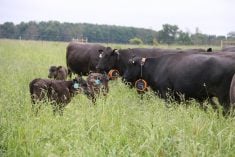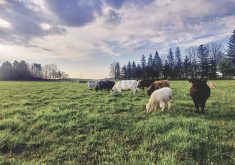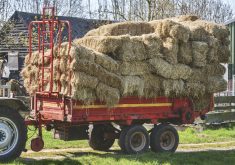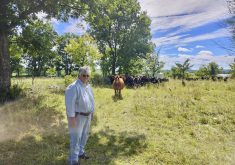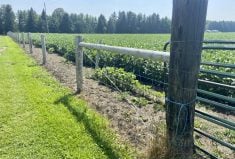In Europe, it’s ryegrass. On the Prairies, it’s barley. In areas where either climate or pesticide resistance makes it impractical to grow corn, livestock producers nonetheless achieve good gains or high milk production.
And, during a recent session hosted by OMAFRA, crop and livestock specialists encouraged Ontario’s livestock producers to consider rotating away from corn – or at the very least away from continuous corn – as part of a province-wide strategy to combat resistance by corn rootworm to the commonly used Bt-based control traits.
Forage and Grazing Specialist Christine O’Reilly outlined a number of possible sources for the energy that’s so readily-available to cattle and other livestock through corn and corn silage.
Read Also

Dissolving eartags could make pig traceability easier
A dissolving eartag for market hogs, called Clean Trace could reduce processing challenges and enable more individual management of pigs.
Ryegrasses, she says, can be “rocket fuel for ruminants,” with high digestibility. But because this manifests itself as high intake, and because yield is lower than corn, you’ll need more acres for silage.
It’s might be possible to give up some alfalfa acres if planting ryegrass, since protein content is elevated in high-quality ryegrass. There’s always a tradeoff, though; this means the crop is also hungry for nitrogen application.
Because it’s a spring-planted grass, ryegrass can serve as a corn rootworm host. But O’Reilly said European studies show the pest doesn’t persist past four years of perennial ryegrass.
The crop can be tough to terminate. You’ll need a high rate of glyphosate tank-mixed with Ultim. And make sure your timing and application are perfect.
The ability to host corn rootworm is more problematic for annual spring-planted cereals, so O’Reilly says fall-planted varieties are a better option when looking to expand the herd’s silage options. Fall rye, she noted, has an allelopathic effect on some subsequent crops, so she suggested fall triticale.
There could even be double-cropping potential if you chop the triticale for feed early enough to seed a sorghum species – either sorghum/sudangrass or sudangrass. Both – unlike forage sorghum – have multi-cut potential.
Because neither has much starch, more starch has to be found for the ration. With sorghum, planting in high populations can affect crops afterwards, so use lower seeding rates.
Betting on barley?
OMAFRA Dairy Specialist Tom Wright began his presentation by noting the good production maintained by Saskatchewan producers using barley-based rations. “Good management of different diets can certainly achieve similar results,” he said.
From both animal health and profitability perspectives, the biggest risk when moving away from a reliance on corn is in the milking herd. Heifers and dry cows can generally easier manage dietary changes. Wright advised dairy producers looking at decreasing corn to know the signs of sub-acute rumen acidosis. And don’t overlook how feed bunk behaviours influence how these changes in feeding regimes are manifested in the herd.




